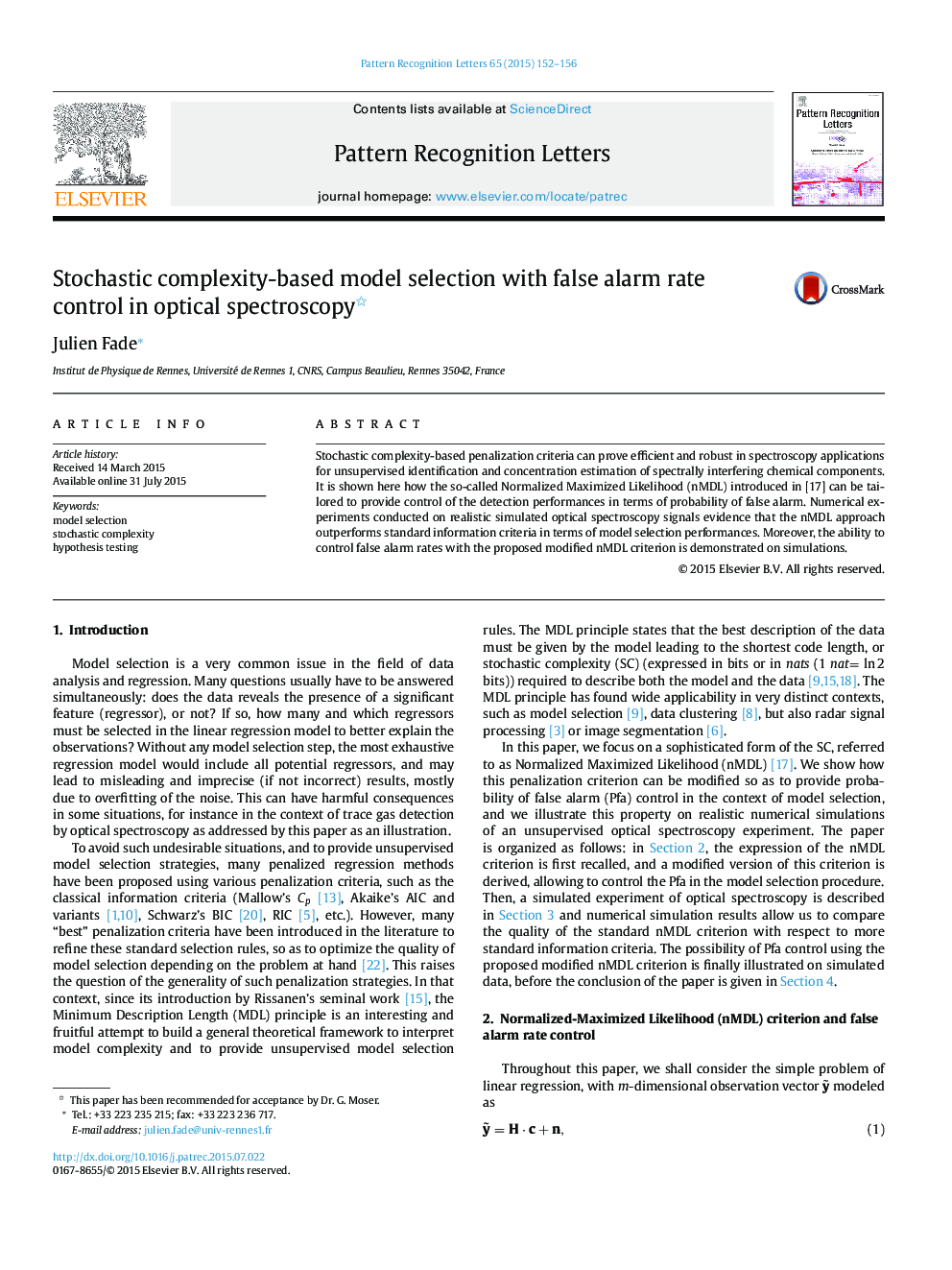| Article ID | Journal | Published Year | Pages | File Type |
|---|---|---|---|---|
| 6941151 | Pattern Recognition Letters | 2015 | 5 Pages |
Abstract
211Stochastic complexity-based penalization criteria can prove efficient and robust in spectroscopy applications for unsupervised identification and concentration estimation of spectrally interfering chemical components. It is shown here how the so-called Normalized Maximized Likelihood (nMDL) introduced in Rissanen (1996) can be tailored to provide control of the detection performances in terms of probability of false alarm. Numerical experiments conducted on realistic simulated optical spectroscopy signals evidence that the nMDL approach outperforms standard information criteria in terms of model selection performances. Moreover, the ability to control false alarm rates with the proposed modified nMDL criterion is demonstrated on simulations.
Related Topics
Physical Sciences and Engineering
Computer Science
Computer Vision and Pattern Recognition
Authors
Julien Fade,
